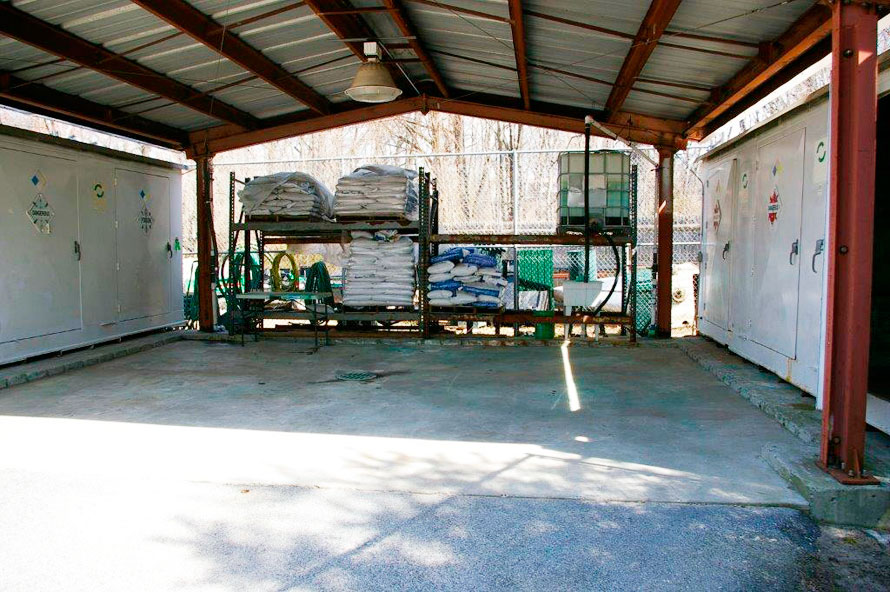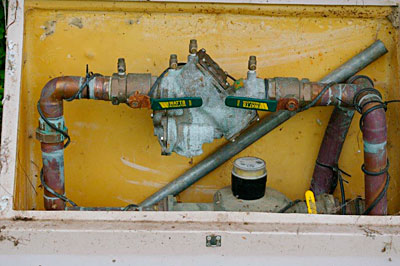Maintaining water quality is a high public priority, to ensure a safe and abundant public drinking water supply as well as to protect fish and wildlife resources that use State waters and wetlands as part of their habitat. A number of federal and state regulations that apply to both drinking water and surface water quality for the protection of aquatic life are relevant to golf course operations, depending upon the proximity to drinking water sources, and surface waters, and depth to groundwater. These include regulations related to stormwater; wetlands; pesticides and pesticide usage; fertilizers; hazardous materials; and water withdrawal. Maintenance facilities are likely to be subject to a number of local requirements, which may vary by county or town.
Drinking Water Quality Regulations
The Safe Drinking Water Act (SDWA), passed in 1974, is the main federal law that ensures the quality of Americans’ drinking water. The New York State Department of Health (NYSDOH) established standards for drinking water quality that are more stringent than EPA standards and must be complied with in the state. Read more
Stormwater Regulations
Stormwater is water that originates in some form of precipitation, as either rainfall or snowmelt. Because this water travels along or through the earth’s surface, it can collect and carry potential contaminants that could compromise surface waters or groundwater. Therefore, regulations exist that govern the quality of water discharged from runoff sources. NYSDEC has established limits for some chemicals in stormwater, including nitrites, nitrates, and pesticides. NYSDEC has also established a limit for phosphorus levels in stormwater of 0.1 mg per liter. Read more
Surface Water Quality Regulations
The goal of all surface water quality protection programs is to ensure that all waters of the State meet water quality standards. The Federal Clean Water Act required states to classify all of the waters of the State according to their best uses and to adopt water quality standards in order to protect those best uses. NYSDEC uses the best uses and standards so established to regulate surface waters , land use associated with tidal and freshwater wetlands, and dams. Specifically, NYSDEC is charged with identifying impaired surface water bodies (i.e., waters not meeting water quality standards), recommending mitigation, and establishing guidelines for enhanced protection through a variety of regulatory programs. Read more
Groundwater Quality Regulations
NYSDEC regulates groundwater, including setting groundwater quality and effluent standards. For more information, see NYSDEC Division of Water Regulations: http://www.dec.ny.gov/regs/2485.html.
Freshwater Wetlands
Article 24 of New York Environmental Conservation Law requires permits to conduct activities within a wetland and an adjacent area bordering the wetland. Physical disturbance, as well as applications of chemicals (pesticides, herbicides, fungicides, even fertilizer), requires an Article 24 permit if the action is done in a state-regulated wetland or within the regulated adjacent area (typically 100 feet from wetland boundary).
Fertilizer Regulations
In New York, the Dishwater Detergent and Nutrient Runoff Law became effective in January 2012. Read more
Pesticide Use Regulations
The New York State Environmental Conservation Law (ECL), Article 33, Part 325, establishes statutory authority to the New York State Department of Environmental Conservation to regulate pesticides and pesticide use. Read more
Aquatic Pesticide Applications
The application of any pesticide to water, such as an aquatic herbicide used to control vegetation in golf course ponds, or mosquito or other insect control applied to water, must be covered under a SPDES General Pesticide Permit. For more information, see: http://www.dec.ny.gov/chemical/70489.html.
Maintenance Facilities
Every golf course has a central area for the maintenance and storage of equipment and supplies. These areas can potentially become point sources of pollution because of unintended releases of chemicals such as pesticides, fertilizers, or fuel during storage or handling of these materials. Containment measures in these areas can easily prevent chemicals from becoming point sources of pollution. Read more
Hazardous Materials
In New York State, the hazardous waste regulations are found in 6 NYCRR Parts 370 through 374-3 and 376. Caution should be exercised when storing fuels or other hazardous material including lubricants, cleaners, flammable paints, and other volatile organic compounds (VOCs). Incompatible and flammable materials should be stored separately in approved storage cabinets. Read more
Water Withdrawal Reporting
New York State requires annual water usage reports for any system capable of withdrawing more than 100,000 gallons groundwater or surface water per day. In accordance with the recently enacted water quality standard for flow, any withdrawal must also ensure that the existing best use of the waterbody from which the water is taken, such as protection of aquatic life, is not impaired.
Reports for the prior year are due on March 31 of each year. Recycled water is exempted from this reporting requirement. For more information on water withdrawal regulations and reporting in New York, see: http://www.dec.ny.gov/lands/55509.html.

 Typical back flow preventer. Source: Bob Alonzi.
Typical back flow preventer. Source: Bob Alonzi.